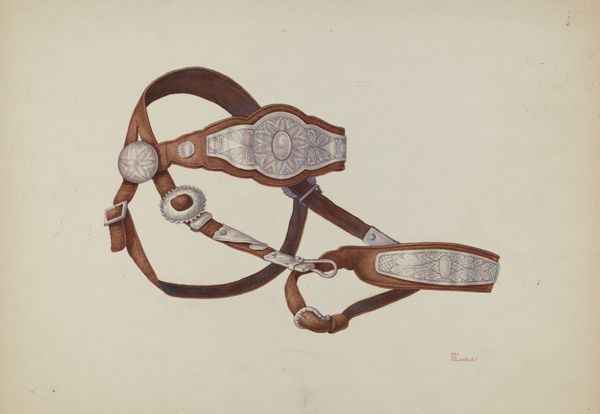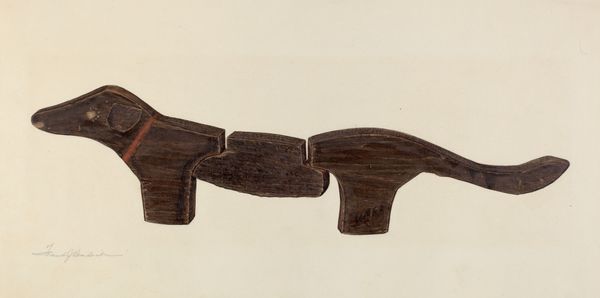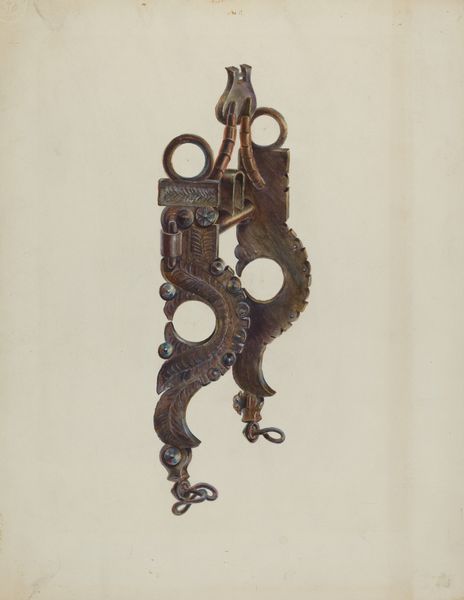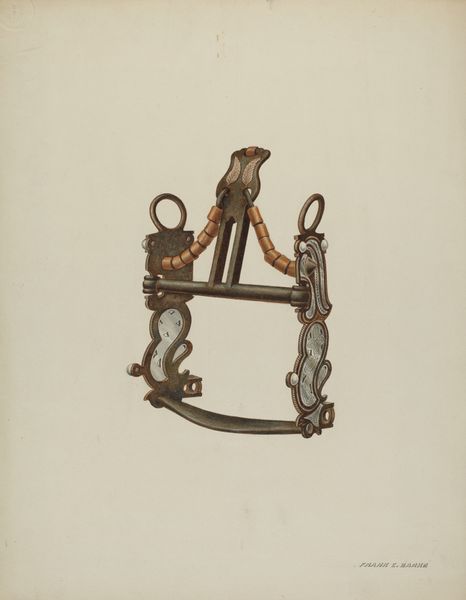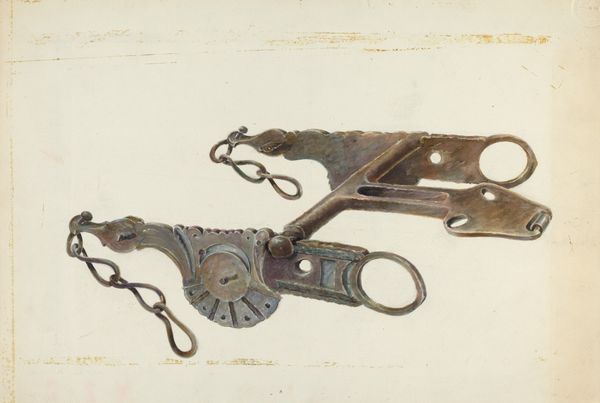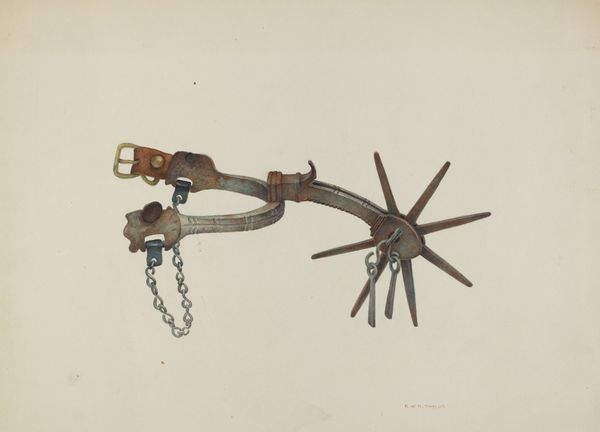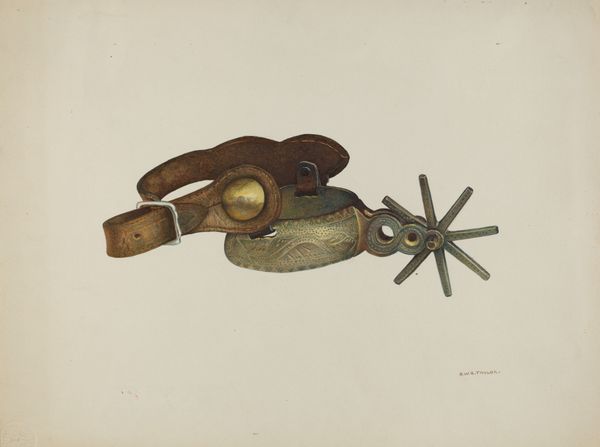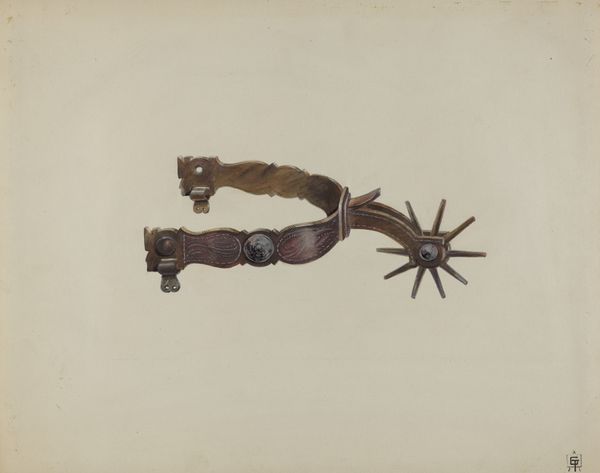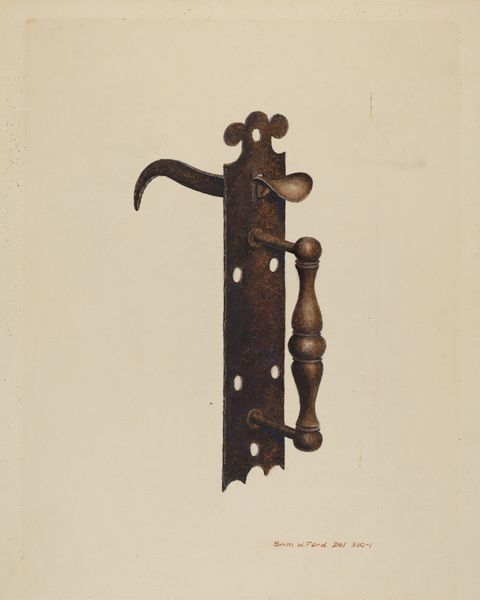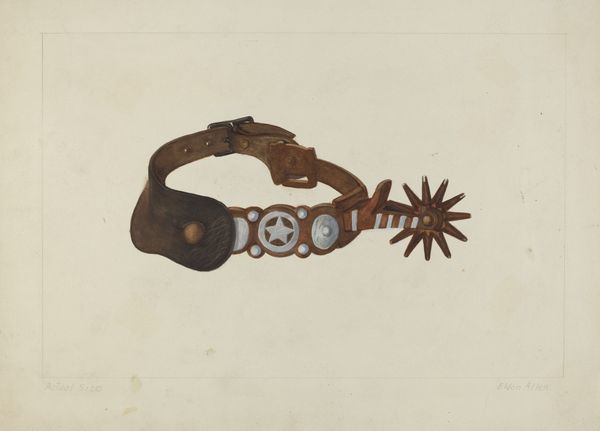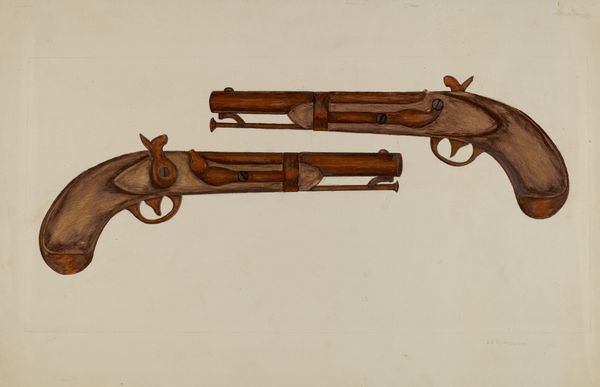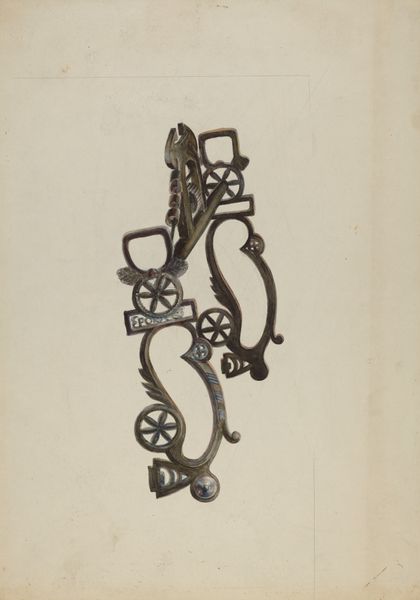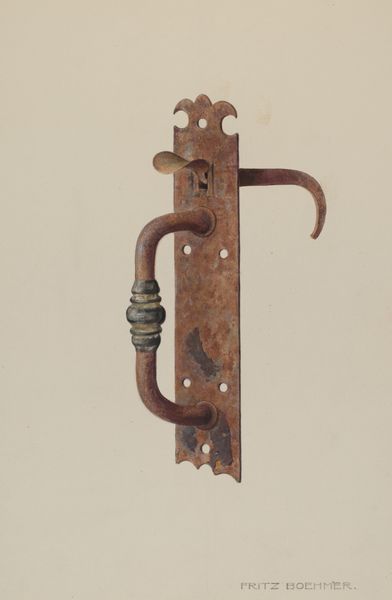
drawing, coloured-pencil, pastel
#
drawing
#
toned paper
#
coloured-pencil
#
coloured pencil
#
geometric
#
pastel chalk drawing
#
watercolour illustration
#
pastel
#
watercolor
#
realism
Dimensions: overall: 35.1 x 52 cm (13 13/16 x 20 1/2 in.)
Copyright: National Gallery of Art: CC0 1.0
Editor: We’re looking at “Silver Dollar Spurs,” a drawing from around 1938 by Cecil Smith, rendered in pastel and colored pencil on toned paper. I’m struck by how meticulously the artist captured the worn texture of the leather and the shine of the silver. It's so realistic! What stands out to you in this piece? Curator: I immediately notice how this image elevates a utilitarian object—horse-riding spurs—into a subject worthy of artistic attention. It's fascinating to consider the labor involved in crafting these objects and the social context of their use on cattle ranches, contrasted with the labor and context in producing an image. What kind of social narratives emerge through their display, do you think? Editor: That's an interesting point – the connection to ranch life versus the "high art" world. How does Smith's choice of materials contribute to this dialogue, do you think? Curator: The use of pastel and colored pencil softens the subject, bringing what could be an aggressive object—meant to control an animal—into a more accessible, almost comforting realm. The toned paper further enhances this effect. The materials themselves act as a filter, shaping our understanding of labor, class, and cultural representation. The medium chosen directly informs the object’s reception. Editor: I never considered that so deeply. It’s like the materials are softening the reality of the spurs' purpose. What do you think the act of creating such a detailed drawing, rather than say, photographing them, adds to the spurs' legacy? Curator: That’s a wonderful question. Drawing, as a process, involves time and deliberate engagement. By spending time to recreate it by hand, the spurs transcend mere representation and becomes imbued with layers of meaning: social context, modes of material production, function, artistic process, Smith’s hand in a wider economy and art world – do you see that? Editor: Absolutely! The choice of rendering is a commentary on much more than the spurs themselves! This was truly enlightening. Curator: Indeed. Considering the means of production can reshape our understanding and engagement of any subject or art.
Comments
No comments
Be the first to comment and join the conversation on the ultimate creative platform.
